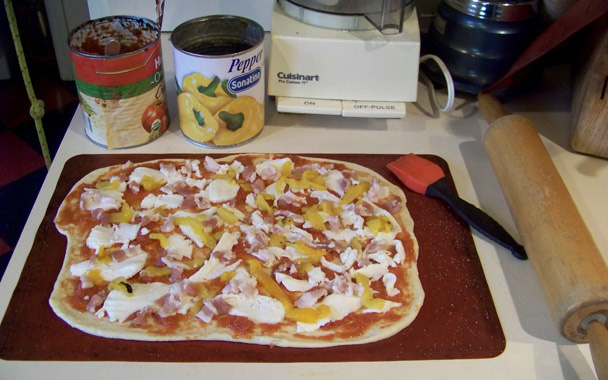I’ve been living a dual life the past five weeks or so. It’s not easy for me to admit this—to come right out and confess publicly—but I’m going to do it, anyway: I’ve been both a frugal Suzy Homemaker and a returning athlete.
This duality of purpose isn’t inherently problematic, but whenever I’ve focused on competitive swimming, I’ve been hedonistic. I always figured I deserved to live it up since I was working so hard in the pool. By burning thousands of calories in a relatively small amount of time, I deserved to watch The Biggest Loser on the Internet, amuse my stomach with an amuse-bouche from chef Melissa Kelly, and buy yet another magazine or book on sports, training, and/or swimming. I was an especially big sucker for sports drinks and supplements. It’s as if I thought I’d make it to the Olympics by guzzling expensive whey protein isolate potions or SuperVitaMax Fabulicious Miracle Stud shakes (not a real drink, by the way). Recovery drinks were my secret weapon.
Although I haven’t touched one of those tempting libations lately, I’m still thinking about training for the 2012 Olympics. What’s my secret? How do I plan to be the oldest swimmer—male or female—ever to prance around in a Speedo before millions of viewers worldwide, shaking my booty to the Olympic Anthem? Without drinking a single overpriced, must-have recovery drink?
By drinking chocolate milk.
For decades, sports scientists have known that exercise lowers levels of glycogen (stored carbohydrates), and those levels need to return to normal before an athlete can perform well in an ensuing practice or game. For most of my childhood, we were told to drink or eat massive amounts of carbohydrates to achieve this, but as it turned out, we’d been doing it all wrong. Yes, we need large amounts of carbs within 20 to 30 minutes of exercise, but they need to be balanced with a smaller amount of protein—four parts carbs to one part protein, to be exact.
Companies fell all over themselves developing and then selling the perfect four-to-one drink, and people like myself depleted their bank accounts faster than their glycogen levels by buying the products. But no more. About three years ago, when kinesiologist and avid masters swimmer Joel Stager and his team at the Counsilman Center for the Science of Swimming, at Indiana University, in Bloomington, set out to make recovery affordable, they found that plain old chocolate milk could do the same things at a fraction of the cost as overstuffed shakes and powders.
Of course, now that I’m drinking a quart of chocolate milk a day, Angus and I are fighting more—over the Nestlé Nesquik, that is—and, even worse, I’ve run out of excuses for swimming so slowly.
Hip Tip of the Week (having recently googled “frugality,” I’ve discovered that it is really “in” right now; in that light, these frugal tips are hip, right?)
We’ve always liked making pizzas at home and think our crust is the cat’s meow (or at least the cat’s near-perfect sassy walk), but it was always such a pain to get the pizzas into the oven: They’d either be half cornmeal on the bottom, which I detested, or they would stick to the work surface. As a result, the kids would be frustrated that their artistically arranged toppings were for naught, and I invariably lost my temper. Now, we just put the dough straight onto a silicone baking mat—a thin, rubbery, nonstick baking sheet that can be used like parchment paper—let the kids do the decorating, and then put the whole thing in the preheated oven on top of a pizza stone. We eat pizza two to three times a week: one for breakfast and a couple more for dinner and/or snacks. We keep a can of crushed tomatoes (70 cents for organic at Caswell’s) in the fridge and use whatever cheese is on sale in a given week. One of our homemade pizzas probably costs about a buck (which includes the cost of heating the oven), and they are delicious—better than any pizza in Maine, almost. Since there is hardly a single American family that doesn’t eat pizza, the silicone mats are a great investment (a 16- by 11-inch mat will run you about $20) and, in our case, paid for themselves in just a few weeks.




 Pinterest
Pinterest


